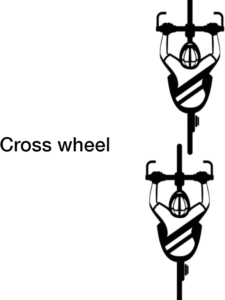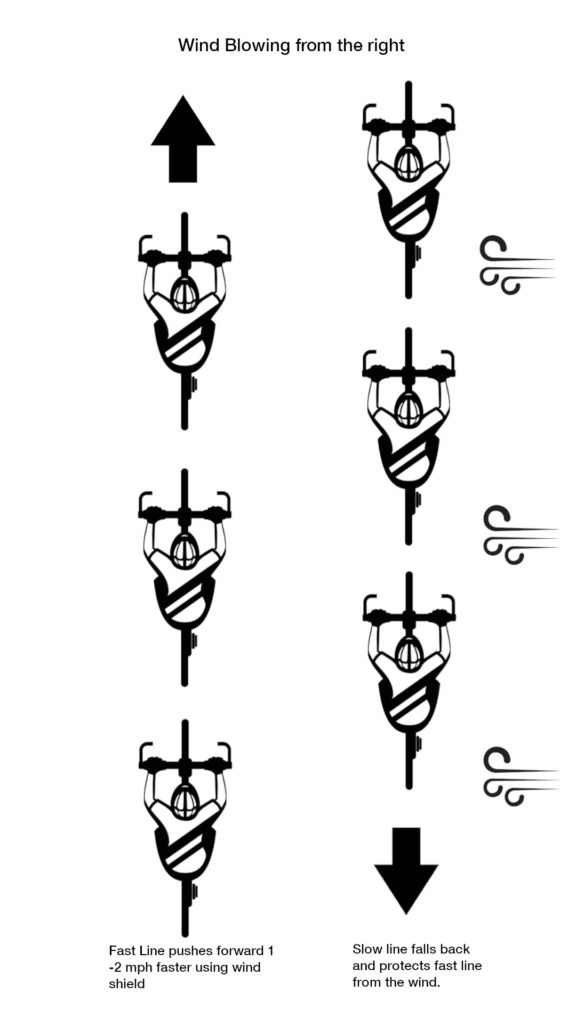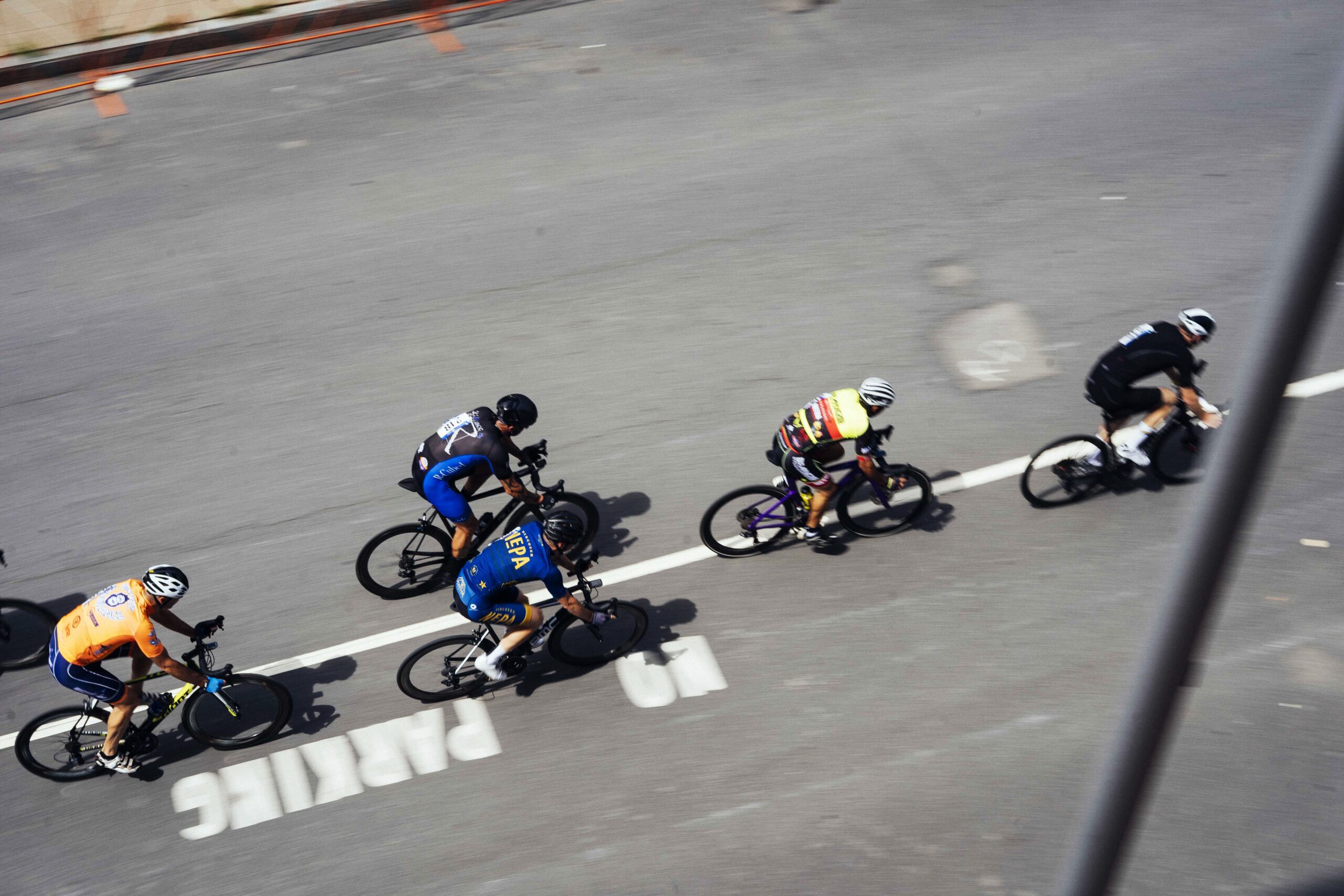What is a Pace Line?
A pace line is a cycling formation where riders take turns at the front of a group, breaking the wind, while others ride in the draft, benefiting from the reduced wind resistance. This technique helps the group maintain a higher speed and pace more efficiently than riding alone.
Etiquette
- Do your fair share! Pull when it’s your turn
- If out riding solo, and you see a pace line, ask before hopping on. Understand that it’s okay for them to say, “no” They may be practicing for an event or wanting to keep the line just to their group/club.
- When pulling in a pace line, do not surge. Keep the pace constant so that everyone can stay together.
- If pulling on a Single or Double Line (see below), It’s your job to indicate when you’re done. Don’t wait for someone to overtake you. Pull as long as you’d like. Just, be sure to leave enough energy to be able to hop back on to the line as you rotate back.
- If you need to step out. Vocalize your intent, use the elbow flip, and fall out away from the other riders and traffic as safely as possible.
- Do not cross wheels: The rider in front of you may need to maneuver quickly to avoid road hazards you’re not aware of. Cross wheeling could cause them to clip your front wheel as they maneuver and cause an accident.
- Maintain 3-4 feet of separation between you and the rider in front of you.
- If you’re having trouble maintaining the pace, vocalize and ask the group to slow down a bit.

Pace Line Types
Single Line
Best for groups of 4 or less. Form a single file line behind the rider pulling. When the puller is done, they will elbow flick to indicate they’re done and which direction they intend to rotate out. The puller moves out to the safest side, and eases off the power to rotate to the back and rejoin the line.
Double Line
Best for groups of 5 or more when there is a disparity of skill level within the group. It behaves as two single lines next to each other. Right and Left. Pullers pull as long as they’re capable. When rotating out, always rotate to the outside of the pace lines, not between.
Rotating
Best for groups of 5 or more riders of similar skill level. There are two lines of riders. A slow line and a fast line. The slow line is moving forward but recovering at a slower pace. The fast line moves forward 1-2 mph faster than the slow line. When the lead rider of the fast line gets past the lead of the slow line, they ease off the power and rotate over to the slow line becoming the new lead of the slow line. The previous second rider in the fast line now is the leader of the fast line and maintains pace to continue passing the slow line. Once a person has rotated to the back of the slow line, they move over and hop on the wheel of the fast line, thus starting to pass the person that was in front of them. The new fast line rider should vocalize, “last” as they pass the person now in the back of the slow line, so they know it’s now their turn to move over once clear. Usually the wind direction will dictate which side (right or left) is the slow and fast line. The slow line should protect the fast line from the wind. As the pace line or wind changes direction, the pace line leader should call for the rotation to change direction as needed.

Important Signals and Cues:
Hand Signals:
- The Elbow Flick* (“Out [Left/Right]”): Used when riding in a pace line. Usually used by the leader to let the person behind them know that the leader’s turn is done and the leader is breaking out from the lead spot to rotate back in the group. Can also be used by riders in the middle of the peloton/pace line who want to exit the line. Whichever elbow is flicked out indicates which side the flicker wants the person behind them to pass them on. The leader then break out the opposite direction and calls out “Out Left!,” or “Out Right!” This signal does not need to be passed back to other riders.
Verbal Cues:
- “Last”: Used in a rotating pace line. Used by the last person in the pace line as they switch from the line falling back to the line moving forwards. As this rider pulls up alongside the person that was previously in front of them, the rider says “last,” to inform the person being past that they are now at the back of the group.
- “Clear“: Used in a rotating pace line. Used by the first person in the falling back line of the pace line as they are being passed by the first person in the moving forward line. As this rider is being passed, the rider says “clear,” to inform the person passing that they are now clear to move over to the fall back line.
